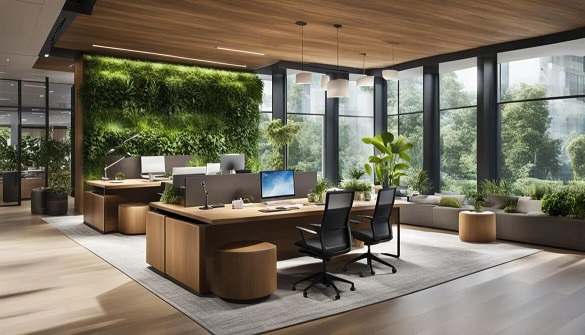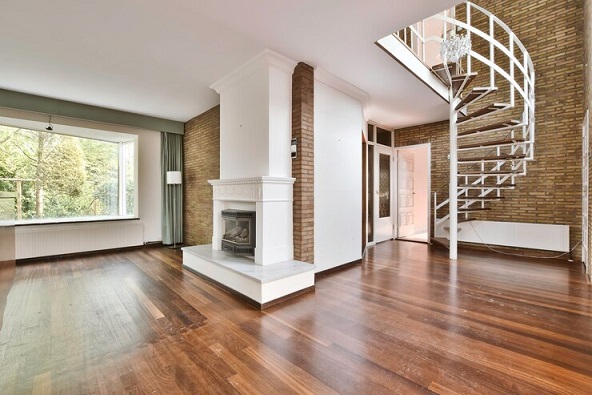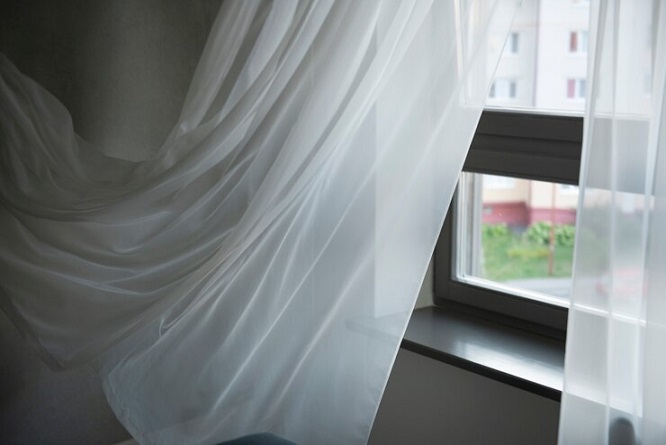The idea of biophilic office space has cropped up in the existing modern workplace architecture to rethink the designed space that welcomes and harmoniously integrates the natural world with the built one. Introducing the concepts of greenery into the office environment, the biophilic design serves to improve the work quality, the state of health and the creativity of employees. By skillfully combining the natural elements such as water, trees, and wetlands, the aim is to get the balance between built environments and nature in the cities back. Let us discuss the main concepts of biophilic office design with a focus on the modern workspace trends that it offers.
Incorporation of natural Elements
At the heart of biophilic office design, the deliberate incorporation of nature in the immediate workplace is the key concern. From that little touch of green to the imposing green wall, these features can include everything from indoor plants to natural light and even water elements. Designers invest their efforts in the incorporation of these components which replicate nature in the office space to generate a calming experience and establish bonds between employees. Furthermore, an emerging body of research suggests that the incorporation of natural elements in office spaces can decrease stress and may promote a better conscious state and enhanced cognitive function, as a result creating a more efficient work environment.
Maximizing natural light
One of the major features of biophilic office design is to highlight and augment space with the natural source of light, i.e. sunlight. Continuous daylight not only reduces the requirement for artificial lighting fixes but also grants many health and wellness benefits to employees. Daylight helps align the system of sleep so well, that better sleep quality and feeling more mentally good can be achieved. On the other hand, daylight has proven to be a productivity booster and an implement that ensures alertness and consequently better quality of work. The incorporation of effective spatial planning in the architectural design coupled with airy features like skylights, huge windows, and light wells are reliable means of providing enough natural light to the office space.
Incorporating biophilic geometry and materials
The biophilic pattern and material aspect of modern office design is another critical element, though. While they do seem to mimic the natural world, keep in mind that these patterns can add a sense of beauty and appeal to different elements of architecture, like flooring, covering, and furniture design. Through eye-catching shapes and textures to many landscape-inspired motifs that reflect a sense of nature into the workspace, they are visual vehicles that carry harmony and balance to our working place.
Provision in an urban oasis
Biophilic office design goes beyond one-dimensionless, offering workplaces broad varieties of microenvironment settings to cater to the needs of diverse work styles and preferences. This approach thus recognizes that employees have diversified necessities and they have different tastes in the work environment. Providing spaces with a blend of open work zones, quiet retreats and outdoor space will give workers an option to use the environment where the activities and their moods are best suited.
Emphasis on Indoor Air Quality
Emphasizing the very significant role of ventilation and purification systems in maintaining the equally vital health and performance of employees, biophilic designs implement strategies aimed at enriching air circulation and cleansing. Here natural ventilation is combined with low-emission materials during the structure construction and indoor plants (which are known as air-purifying ones) are also employed.
Promotion of biophilic engagement
A biophilic office design is not limited to the physical environment. It also boosts employees’ engagement with the biophilic aspect, which enhances their well-being. The process requires in-house and offsite projects focused on how one can get nature acquaintances through it. Through green projects and community work in gardens, and the creation of outdoor activities in line with wellness up to nature-inspired lessons, these steps cultivate a more profound awareness and appreciation of nature and its value.
Conclusion
Biophilic office design with modern architectural concept postulates the inversion of how the office space is designed and perceived. Adopting this approach to workplace wellness and sustainability, the designers take into account the integration of natural elements as well as maximizing natural daylighting, incorporation of biophilic patterns and materials, designing multi-level microenvironments, focusing on clean indoor air, and also the engagement of biophilia are the key principles of wellness and sustainability for modern-day workplaces. Modern biophilic office design as it validates the visible effect that employee well-being and environmental responsibility have in our community is a solution that many organisations are embracing to deal with the physical and psychological aspects of the modern workplace. ‘Officebanao’ interpretational style integrates with both biophilic design ideas possible through nature and attention to details specific to the client, ultimately creating work environment that proves to be immensely gratifying in physical realms of aesthetics, well-being and productivity. You can reach them via WhatsApp – 8929399141 or email your queries to inquiry@officebanao.com.


